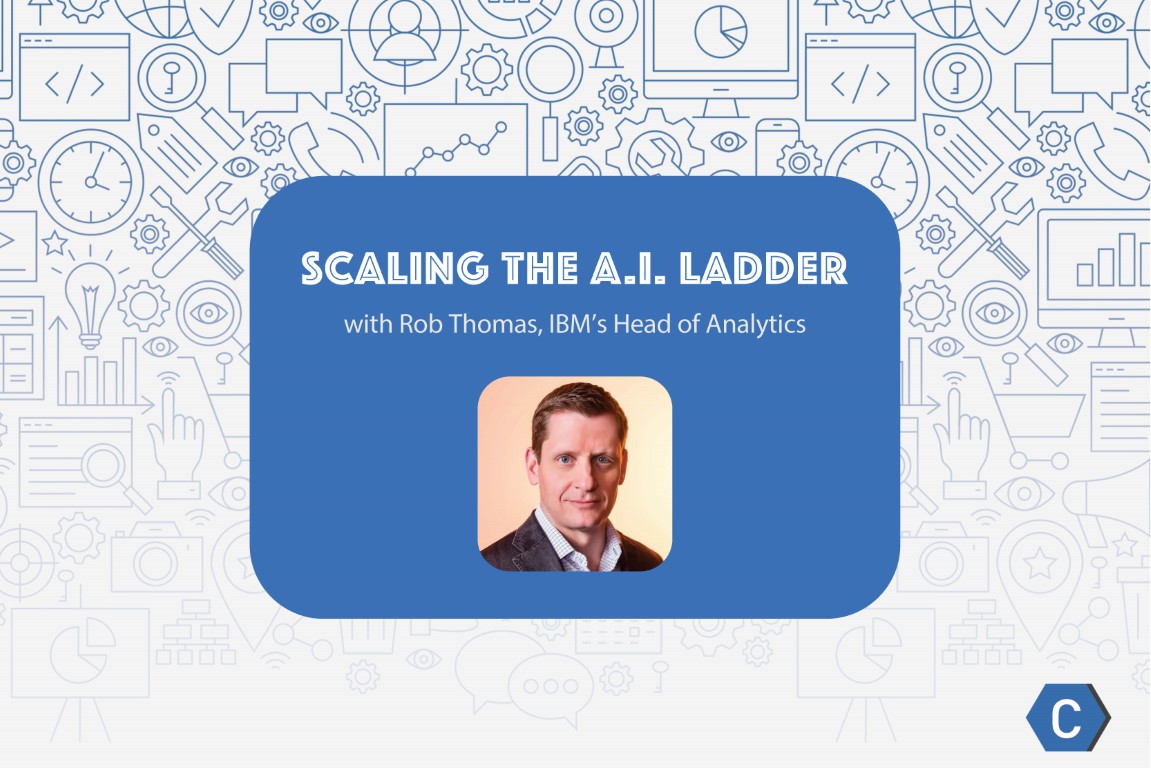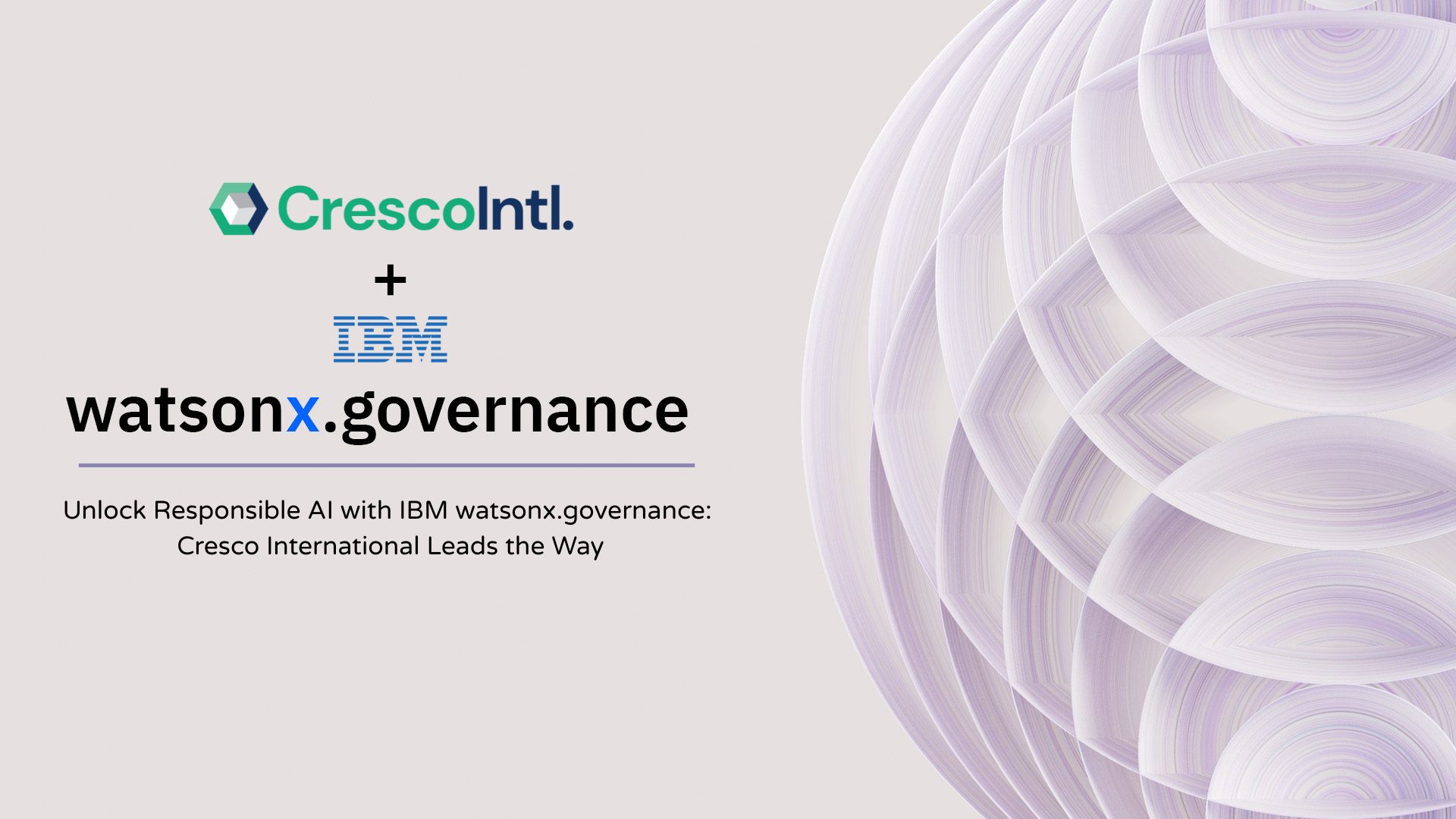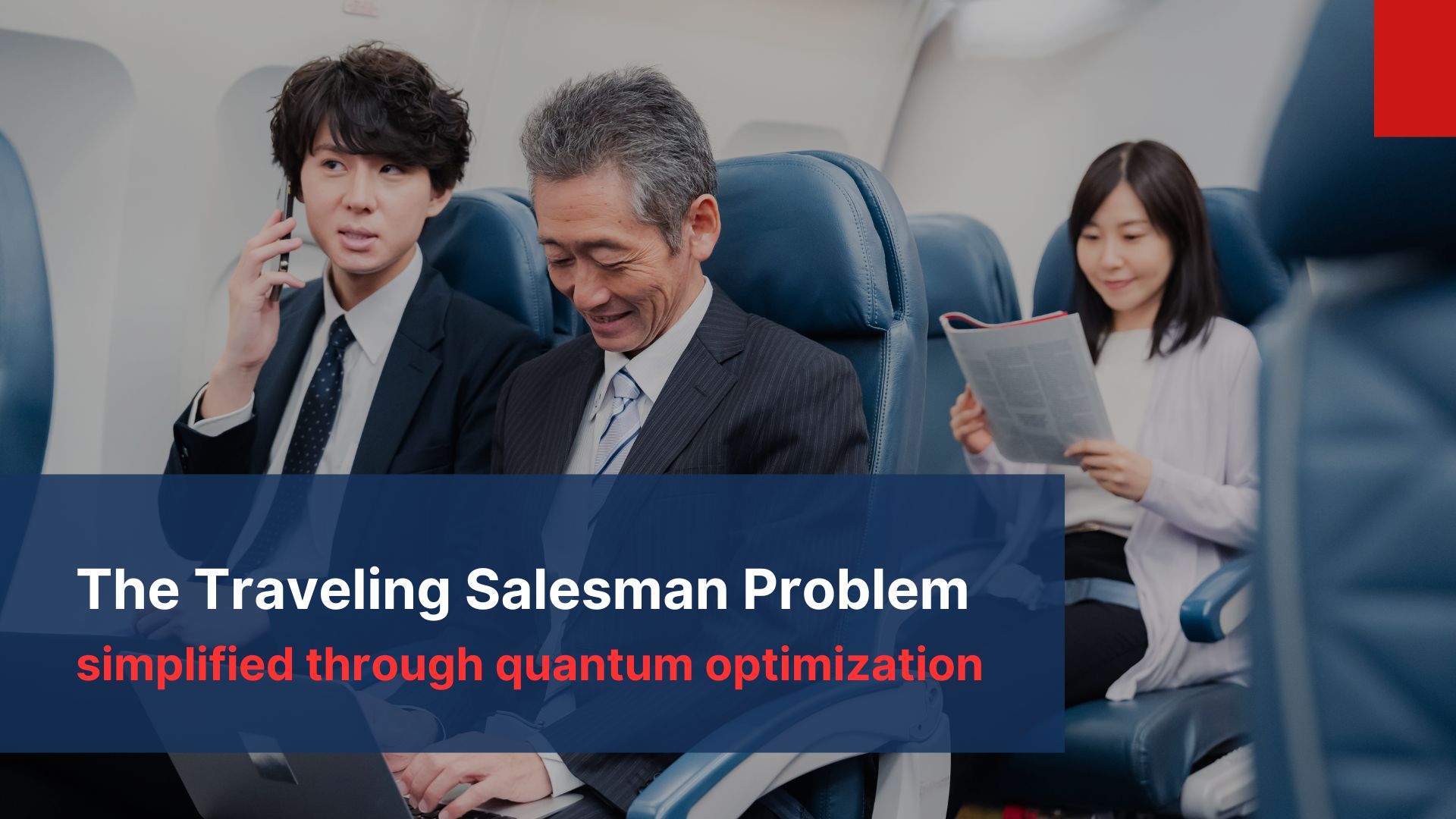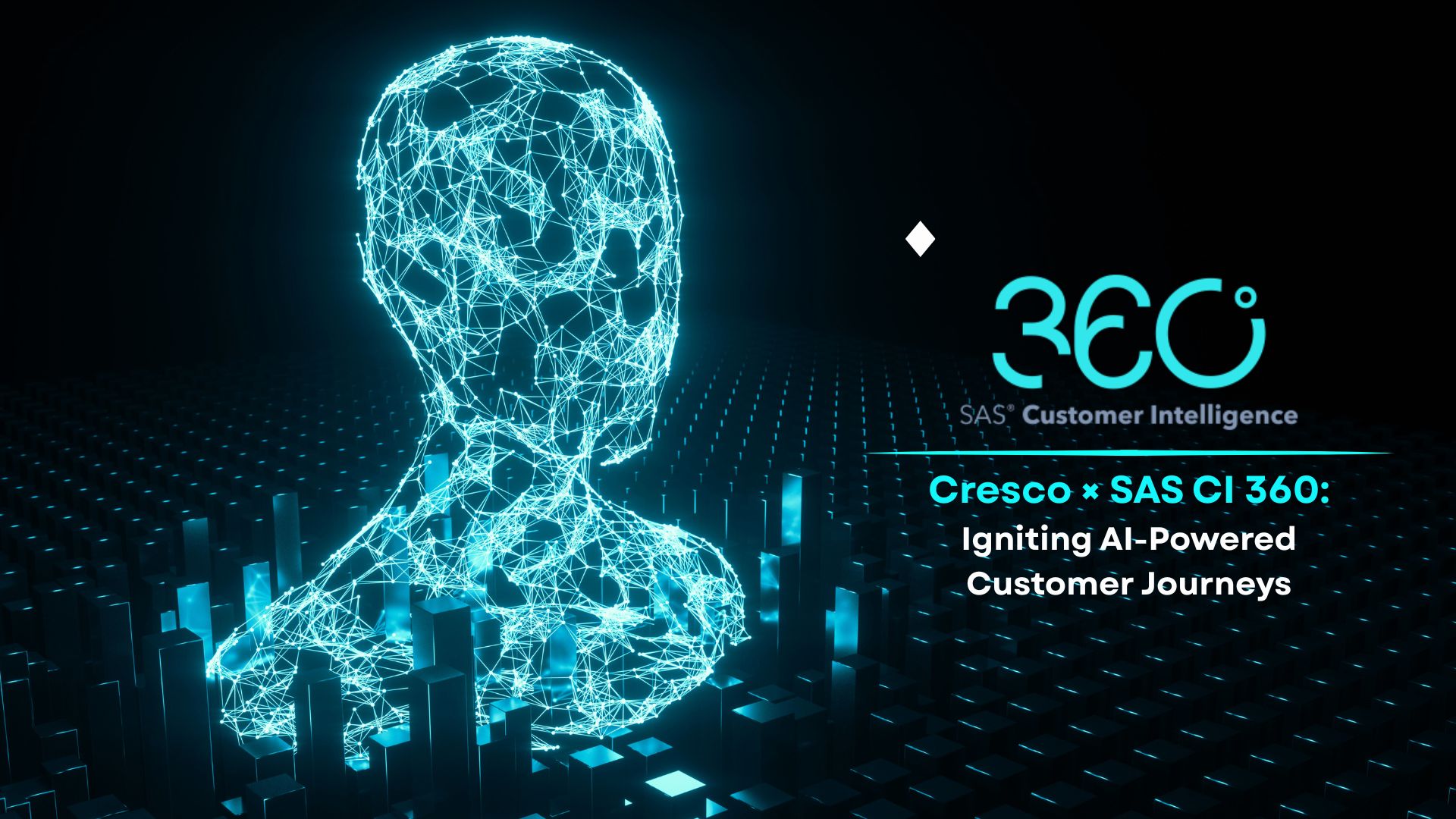Amanda Buckholt: [00:00:16] Coming live from Dallas, Texas, is Amanda from Cresco International. You know, they say everything’s bigger in Texas and that includes the stars we bring on our show. Her today, we have with us Rob Thomas, the general manager of IBM Analytics and author of the recently released AI Ladder: A Guide to Demystifying AI for Company’s. Cresco’s CEO Sanjeev Data and Cresco VP of Services Kenny Mobley are here today with us to discuss with Ron and get his take on all things AI. We can’t wait for you all to hear the great insights from these analytics experts. I’m going to hand it over now to Sanjay and Kenny to kick this off.
Sanjeev Datta: [00:01:01] Great. Amanda, thank you. And Rob, a very big Texas. Welcome to you. Thank you so much for joining our very first podcast.
Rob Thomas: [00:01:09] Great to be here. Glad to speak with you guys.
Sanjeev Datta: [00:01:13] All right. So, Rob, first question. Congratulations on 20 years at IBM. We’ve all read your book. It’s very impressive. It’s a great read. Tell us about the A.I. ladder and how did you come up with this term?
Rob Thomas: [00:01:29] You know, what’s important about the A.I. market is it’s the largest opportunity any of us will ever see in our lifetimes. McKinsey said it will add 16 trillion dollars to GDP by 2030. And even if that’s all five order magnitude, I think we can agree that’s a huge opportunity. Despite that. Adoption of A.I. is less than 10 percent, according to Gardner. So huge opportunity. Very little adoption. The question obviously is why?
And my view is there’s three reasons for that. One is data data’s hard to find, hard to use, and it restricts the use of A.I. Skills. Meaning organizations don’t have all the data science fields they need to be successful. And third would be trust. Meaning there’s a little bit of apprehension on the whole topic of AI. The AI ladder in the book that you mentioned is really about a methodology or roadmap for companies to use to get A.I. into production. So to help speed their adoption from how they think about their data, how they think about data practices, building a data strategy and then ultimately putting A.I. into production. So the rungs of the ladder, it’s much like it sounds about.
There’s different steps and you don’t have to go through them in order. Some companies have already done two of the rungs. You just need to do a third. But the rungs, the ladder or data collection, organization, data analysis, and then infusing A.I. into your organization. So four basic rungs of the ladder. The challenge is to think about where you sit as a company today and which is the area that you need to focus on.
Kenny Mobley: [00:03:20] We hear a lot about Watson anywhere. Can you elaborate on what IBM’s R&D and engineers have built?
Rob Thomas: [00:03:28] Let’s decompose first what Watson is. Watson is one is it’s a set of tools for companies that want to build their own A.I.. So think of it as a tool box where you can kind of pick and choose what you want or building models, training models, getting models into production and then ultimately managing the lifecycle. Explain ability of models, bias detection models. So on one hand, it’s a set of tools. Anybody can customize them to build their own A.I.. On the other hand, Watson is set of applications, where we’ve seen common business problems like customer support, like financial planning, like WREG tech. And we’ve built a package solution that makes it really easy for the line of business to adopt A.I..
The thought behind Watson anywhere is about taking both that toolchain I described as well as the applications and making those available where ever your data may be, whether your data is on premise, on any public cloud, on a private cloud. Because we’ve built Watson out on RedHat open shift as the Kubernetes platform. It is now free to run wherever your data is.
Sanjeev Datta: [00:04:47] All right, so. So that’s the next good question that we get a lot and this is for the college students out there, the aspiring data scientist, right. So, you know, there’s a lot of conversation about A.I. at every different level at universities across the globe and even on on the world wide web where there’s a lot of these groups and interests in any AI. So what is the message that you would give to educational institutes in terms of where do you start with the AI if you’re a college student or if you’re just getting into the job market? What are some of the skills to be maybe working closely with IBM or the business community or just working at an organization that wants to implement A.I. solutions?
Rob Thomas: [00:05:38] When I mentor students, I talk to them a lot about, you know, regardless of where your ambitions lie. You know, maybe you want to do history or English or business or finance. Regardless of that interest, I think to really round yourself out. What I would call a tech forward era that we live in. Take some computer science courses. And if that peaks your curiosity, maybe you go a step further and you’re looking at things like statistics or even building models in Python. Python is really the language of A.I. models today and probably will be for the foreseeable future.
So I just encourage you to think about how you build a broad set of skills that can start with computer science. It can expand to things like statistics and it can get really deep into things like Python or deep learning frameworks. If the curiosity is really there, I think just having a basic exposure to this is really important because as you see companies working in A.I., the ones that are the most successful tend to combine a business person along with a technology person. And the more that they can, I kind of understand each other where they come from, what motivates each other, the more successful they will be.
Kenny Mobley: [00:07:00] What is the importance of building trust into your A.I.?
Rob Thomas: [00:07:06] I think inevitably, as companies get a lot of A.I. models into production, they’re going to start to use that to automate decision making. And the minute that software is making decisions, almost regardless of what that decision is about, there’s going to be a natural question of, OK, well, how is that decision made? Where did that data come from? Who developed that model? This idea of explainability or the broader term I would use as lifecycle management is understanding all of your A.I. models, how they’re making decisions, where the data came from, who’s had access to that data, and what we do with watch an open scale as we enable that capability not just for what models built in Watson, but for models built anywhere in open source, or any third party tool.
Because I think as companies get more and more models into production, everybody is going to want to be able to manage those models effectively. Understand if there’s drift in the model or if something’s not performing the way it should be. And so we just need to make it really elegant for data scientists to hook up their models to a common interface or a substrate, if you will, so they can understand what they’re doing, why they’re making the decisions they’re making.
Kenny Mobley: [00:08:29] One of the difficulties with introducing A.I. in a company is the resistance employees to the cultural and business model change it requires. Do you have any tips for how to overcome this resistance and have a smooth transition?
Rob Thomas: [00:08:42] I think the biggest resistance is cultural. While while there are skill gaps, I think the bigger issue is how do you create an organizational structure that has a data culture, if you will, or a culture that’s going to make A.I. successful? And the way I’d describe that is if you think about ERP implementations for those of us, they’ve been around for a while. Those used to be huge investments, multi-year commitment to dollars. So everything was at stake in terms of project success and a company could do at most one of those projects every few years.
What’s different about A.I. is you have to put that on its head, which is I tell a client you should be doing a hundred A.I. projects next year, and if you do one hundred projects, half of them are going to work at all. So for the half that do work, then you keep going and then you down select again. So it’s about changing the cultural to be more of an iterative process to accept failure. A failure gets you one step closer to a success is the way to think about it. And that’s a big change for many organizations. So I think what that requires is you need top down leadership. You need to talk about this idea. Hey, we’re gonna do a ton of projects. We already know many of them will not work. But that’s OK. And if you take that mentality into a, I think you’ll find that you’ll be really successful as a company’s.
Kenny Mobley: [00:10:20] From your experience, where do you feel organizations are needing more hand-holding and technology assistance when it comes to the different parts of the A.I ladder?
Rob Thomas: [00:10:30] As you think about companies adopting A.I., this is very different than what I’d call the consumer experiences or whether that’s a talking, talking speaker or, you know, Instagram classifying photos. Enterprise A.I. is very different. I think the capabilities that will have a huge impact for enterprises are things like natural language processing. This is understanding language and document communication, clickstream data.
Everything that goes into communication and enterprise can be encapsulated in LP models. I think that’s really important. I think automation is important using A.I. to automate the kind of tasks that people don’t want to do in the first place so that you can shift people to higher value work that will know better impact clients. So an LP comes to mind, automation comes to mind. There’s a lot of other potential areas, but I’d say those are the two that stick out to me.
Kenny Mobley: [00:11:33] Enforcers predictions for 2019 regarding artificial intelligence.
Kenny Mobley: [00:11:37] 60 percent of the decision makers at firms adopting an eyesight. Data quality is the number one challenge when trying to deliver A.I. capabilities. You say that a data lake is the best way to help ensure the quality of your data. Can you speak a little bit about IBM’s process for building a data lake and how specifically it helps improve data quality?
Rob Thomas: [00:11:59] I think the in term of data lake has evolved a bit. It was originally synonymous with Hadoop. About five years ago, the way that I would say that’s evolved is when I think about a data lake today. This is about how do you eliminate data silos? Most companies have hundreds, if not thousands of different places that they store data and we think we tie those together using really high performance data virtualization so that those start to act as a single repository, even though data is actually physically spread out in many cases to different countries, different locations.
And once you kind of created this data layer, then you can start to do things like catalog your data. And I’d say one of the main things every company is going to need over the next few years is a data catalog, which basically explains where all the different data assets in my company are. What are the sensitive data assets? Maybe it includes credit card data. P.I Something like that. And so the definition of a data lake in my mind is about how you create this fluid data layer, how you catalogue the data so you can actually understand where everything sits. Because then once you have that, it becomes really easy to build models on top of that and train those models, which then helps accelerate how you get A.I. into production.
Sanjeev Datta: [00:13:29] So I’m going to ask you this question, Rob, so I’m more before I ask the question, just going to let you know. So Cresco obviously is an independent consulting firm. We build analytic solutions and solutions using technology. Now, what we like about the IBM stack right now going from the BI to the fine BI player to the financial planning and analytics to the A.I. structure, which we like to, you know, break down into like predictive analytics and optimization.
So one thing we really like about your technology is, is the ability for a client to integrate all these technologies into one have an integrated solution. Those talking to each other on IBM hardware, IBM Cloud, whatever, you know, IBM Data Center. But the value that you’re bringing is the ability to do optimization. And as you mentioned a few times in the past, you know, going the A.I. the ladder will also be part of the decision optimization technology. And that’s what we find very, very valuable. And where we’ve done implementations, we’ve seen amazing ROI for clients. So you’re in a very good position right now. And when I say you can talk about all the IBM folks out there who are who are positioning their technology to end clients and clients are actually using this technology, too. So you have the A.I. layer. Business optimization. You’ve got governance wrapped around all the different analytics products. You’ve got a I know, embedded into a lot of your analytics products. What’s next for IBM? Where are we going next?
Rob Thomas: [00:15:13] We make a big investment in research and IBM and I don’t think any company can be successful in AI without big investments in research. One of the big I’d say unaddressed problems in the market today is around using A.I. to make I.T. better. Think about it. There’s been all this focus on A.I. for the last couple of years. Different use cases, most of which are line of business focused. We actually haven’t used AI to make a CIO’s job much easier. And that’s kind of a forward looking problem that was attacking. We’ll have more to talk about that as we get into 2020. But that is one area that I think is very interesting. Secondly is that you guys appreciate this with your services expertise is a lot of a or analytics projects. Start with a big e-tail exercise moving data around.
Players don’t really have a big appetite for that. So a lot of what we’ve done inside the cloud packs is instantiates services as microservices to make it really easy to bring in different capabilities over time. And that really changes the trajectory of these projects where clients can get value much faster as opposed to having to start with a big data movement or or data prep exercise. So those are two areas that we continue to advance really focused on as we enter 2020.
Sanjeev Datta: [00:16:48] Yeah, the whole the whole multi-cloud environment. That’s really something that we’re seeing at the organizations and clients that we work with. It’s being appreciated a lot because it makes like a lot more easier for organizations that are already down the path of a project and have multiple options and technologies from the IBM stack and really like what you guys are doing with the Red Hat acquisition. So that’s that’s fantastic. I have one more question for you, Rob, and that is let’s say we go back 50 years. Right. And if you can apply the technology that you have today to any industry that you want with a goal to make the biggest impact and the biggest change.
What would that be for you?
Rob Thomas: [00:17:38] I think that’s pretty straightforward and it’s kind of a I’d say it’s two things that are highly related, which is health care in government. If you think about it, those two industries have made very little progress in terms of productivity, efficiency, and the ability to provide new services. And this is why health care continues to grow as a percentage of GDP in the US in particular just hasn’t been as efficient as it could be. So you go back 50 years, you would start you would kind of start from the ground floor and say, how do we use technology as healthcare advances, which obviously has tremendously. How do we use technology to make it productive as we go? And that could also extend into things like government, because the two are highly related, related because much of healthcare is administered through government programs.
Sanjeev Datta: [00:18:31] Excellent. Thank you for that.
Amanda Buckholt: [00:18:36] Well, we’ve learned a lot about your thoughts on technology today, but we don’t necessarily know as much about you outside of work, so we’d like to end our podcast. On a lighter note, by learning a little bit about one of your hobbies that’s unrelated to work.
Rob Thomas: [00:18:53] Oh, I got to pick one. That’s tough. I love exercising. I watch a lot of college football, so I love sports, especially SEC football.
Amanda Buckholt: [00:19:03] Yeah, roll tide.
Rob Thomas: [00:19:06] I’m a gator. You’re not going to get a lot of it. I like cooking southern food. I grew up in the south. So I make a lot of other things like that.
Amanda Buckholt: [00:19:17] Awesome. Well, thank you so much for taking the time to talk with us today. We really had a great time exploring your thoughts on A.I and the A.I. ladder. We can’t wait until you release the full version of your book in the spring. Thank you to our listeners for tuning in today. Join us next Sunday when we discuss trends in Watson studio with IBM product managers. And be sure to follow us on Linkedin under Cresco International and on Twitter at Cresco_Intl to stay up to date on the latest news in the analytics world.











